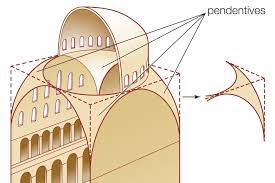Speaking of the monastic life...
Today (13 May) is the feast day of John the Silent (452-558), who took living a private life to an extraordinary degree. When he was still a young man, his parents died, leaving him fairly well-off. He built a monastery in Nicopolis, Armenia (his home town) and moved in with several others, quickly gaining a sterling reputation.
After nine years, tired of the responsibilities of leadership and wishing to live a more contemplative life, he moved to Jerusalem to live in solitude. While there, he had a vision during prayer one night, telling him to follow a light. The light in his vision indicated Laura, a monastery of 150 monks run by St. Sabas. John went to Laura* and requested the opportunity to live a life of solitary prayer. We are told that John fasted and prayed during the week, leaving his cell only for mass on Saturday and Sunday.
When he had been at Laura for four years (he was at this time about 42), St. Sabas brought the worthy John to the new Patriarch of Jerusalem, Elias, to have him ordained as a priest. John, a man of few words, traveled to Calvary for the ordination; it was there that he spoke up, asking to be able to speak privately with Elias.
John requested of Elias a promise of confidentiality, and then told him the truth: John was already ordained, and a bishop!** He had been made bishop back in Nicopolis, but the rigors of leadership and his awareness of his own shortcomings prompted him to flee to a quieter life; hence the trip to Jerusalem. Patriarch Elias told St. Sabas that he chose not to ordain John, on account of some things he had been told. St. Sabas was concerned that he had been mistaken in John, and that John was guilty of some great crime. We are told, however, that St. Sabas learned the truth through prayer. He confronted John with this revelation, upset that John had withheld the truth from him. John wanted to leave Laura, but St. Sabas convinced him to tay, promising that the secret would go no further. John resumed his silent life of prayer.
In his early 50s, John had reason to leave Laura and go into the wilderness, but returned six years later after St. Sabas convinced him to return. He spent the next 40 years keeping to himself in his cell, speaking only to the monk who brought him his meals.
One day, he was visited by a young man, Cyril of Scythopolis, seeking advice. He advised Cyril to join the Laura. Cyril wrote biographies of seven monks who became saints. From him we learned the story of John the Silent, who so desired a life of contemplation and solitary prayer that he fled the office of bishop and was almost ordained twice. He died on 13 May 558, aged 104.
*From Greek Λαύρα [Laura="alley"].
**
I apologize for "burying the lead" as they say in journalism; I should have told you this part back in the second paragraph, but saved it for a punchline.



































